This easy charcuterie board for beginners is your ultimate guide to creating a delicious grazing board for your next party. These easy step-by-step instructions will show just how simple it is to make this popular appetizer.
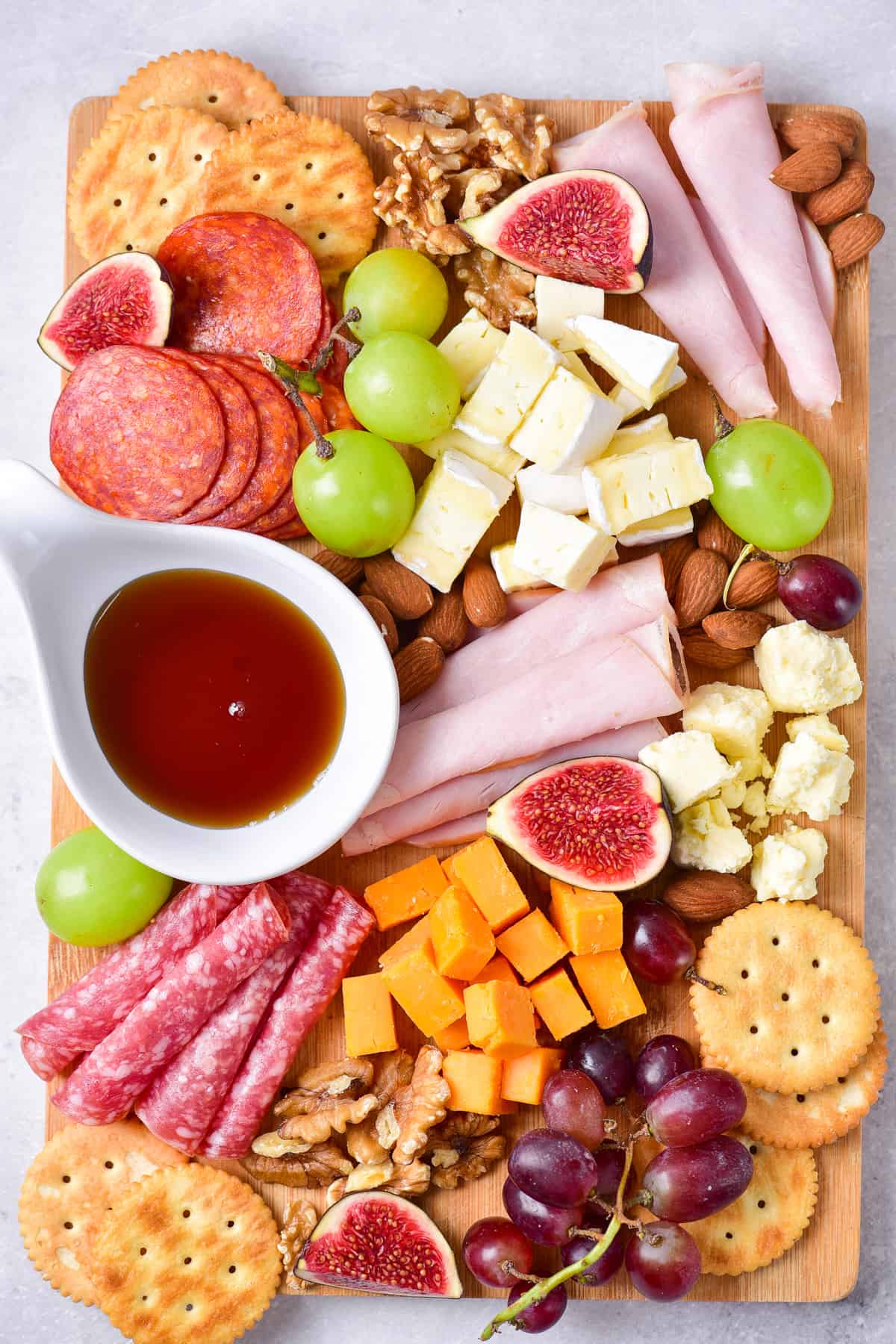
Email me the recipe!
Plus get all our new recipes too!
Are you looking to impress your guests with a beautiful and delicious spread? Have you always wanted to try to make a "grazing board" but just didn't know how to get started?
Then this post can help! It's a step by step guide to making a charcuterie board for beginners, that will turn any hour into happy hour!
This recipe is all about creating a classic charcuterie board using a large board, different meats, a few different cheeses, fresh fruit, nuts, a sweet sauce, and crackers. But with a little imagination, you can easily take it to the next level!
If you enjoy making easy appetizers, try my Beef Jerky Dip, Ground Beef Queso Dip, or my Air Fryer Bang Bang Cauliflower!
What is a Charcuterie Board
If you're new to the world of charcuterie boards, you might be wondering what exactly they are. Simply put, a charcuterie board is a platter of cured meats, cheeses, crackers, fruits, nuts, and other complementary foods. It's a perfect appetizer or snack to serve at any gathering like your monthly book club or a holiday party.
The word "charcuterie" comes from the French term for pork butcher, and traditionally, charcuterie boards were made up of various types of cured meats.
However, these days, the term has expanded to include more that just deli meats and our favorite cheeses. Now-a-days, you can find boards made with entirely vegan and plant based snacks, healthy breakfast foods, and even desserts.
Charcuterie boards can be customized to fit any occasion or taste preference. For example, if you're hosting a wine and cheese party, you might want to focus on cheeses and pair them with the wines you're serving.
Or, if you're serving a crowd with diverse tastes, you can include a variety of meats, cheeses, fruits, and nuts to appeal to everyone.
Choosing the Right Board
An important first step of creating a charcuterie board for beginners is choosing the right board. There are a few different types of boards to consider, including wood, marble, and even a cutting board or tray.
Wooden boards are a classic choice for charcuterie boards. They are durable, affordable, and easy to clean. Plus, they add a rustic and natural touch to your presentation.
Marble boards are another popular option for charcuterie boards. They are elegant and sophisticated, and they help keep your meat and cheese cool. However, they can be heavy and expensive, and they may require more care when it comes to cleaning and maintenance.
If you don't have a dedicated charcuterie board, you can also use a cutting board, tray or even a baking sheet. These options are versatile and easy to find, but they may not have the same aesthetic appeal as a dedicated charcuterie board.
Ultimately, the right board for you will depend on your personal preference and budget. And don't be afraid to get creative with your presentation. That's part of the fun!
Don't forget to add some fun cheese knives, spreaders, small spoons and unique bowls to take your creation to the next level.
Essential Components of a Charcuterie Board
When it comes to building a classic charcuterie board, there are a few essential components that you should keep in mind. These include meats, cheeses, crackers and breads, fruits and vegetables, and extras. By including a variety of items in each of these categories, you can create a beautiful and delicious charcuterie board that is sure to impress your guests.
Meats
Meats are one of the most important components of a charcuterie board. You should aim to include at least three different types of meats to provide a variety of flavors and textures. Some popular choices include salami, prosciutto, pepperoni, chorizo, mortadella, and slices of meat such as ham or turkey. Summer sausage is another delicious meat that can be sliced or cubed.
Cheeses
Cheeses are another essential component of a charcuterie board. You can include both soft cheeses and hard cheeses to provide a range of flavors and textures. Some popular types of cheeses include cheddar, gouda, brie, blue cheese, goat cheese, aged cheddar, burrata, stilton, camembert, parmesan, and pecorino Romano.
Crackers and Breads
Crackers and breads can help provide different textures and flavors as well. Some popular choices include breadsticks, water crackers, and whole-grain crackers. Sliced baguette is a nice neutral tasting bread that goes well with meat and cheese. Including something sweet like small slices of pumpkin bread or gingerbread is a fun way to add a fall and winter note.
Fruits and Vegetables
Fresh fruits and vegetables are an important component of a charcuterie board because they give the grazer something sweet and bright to break up the heavier, savory flavors of the meat and cheese. You should aim to include a variety of fresh and dried fruits, as well as a variety of vegetables. Some popular choices include grapes (we like red grapes and green grapes) berries, figs, cherries, and sliced cucumbers. Be sure to include both sweet and salty options to provide a variety of flavors.
Extras
Extras are the finishing touches that can take your charcuterie board to the next level. Some popular choices include olives, nuts, little bowls of honey or mustard, dips, pickles, dried fruit, and jams. Dark chocolate is another great addition that is sure to wow your guests.
Ingredients
There is no wrong way to make your own charcuterie board. But it does help to have some guidance. We made our board with the following ingredients:
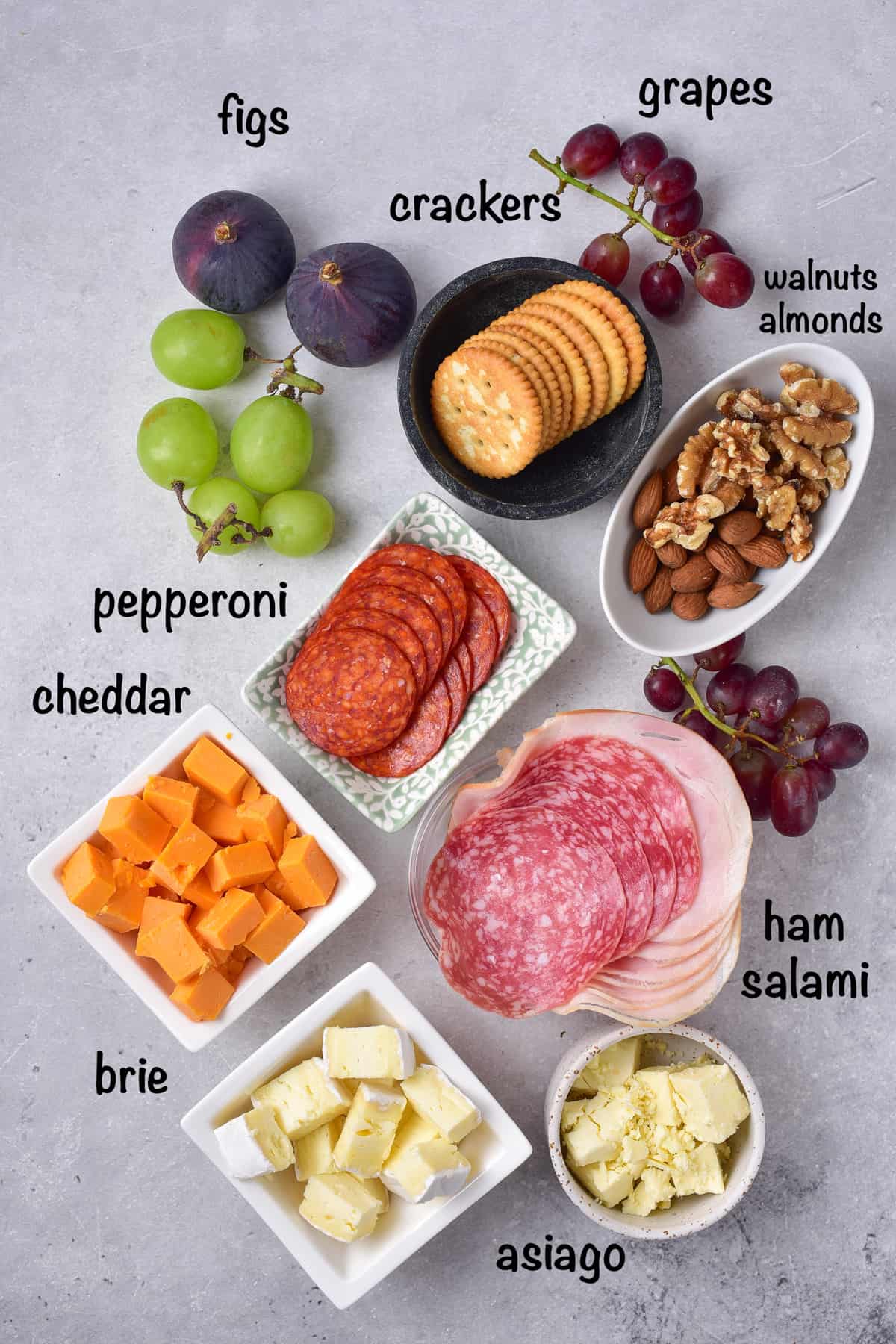
- Honey: maple syrup or another sweet condiment like a chutney or jam.
- Brie cheese: a soft cow's milk variety. Camembert is a good alternative.
- Cheddar cheese: a hard cheese variety that can be diced or sliced.
- Asiago cheese: or another crumbling cheese like Lancashire, blue cheese, feta, or goat cheese (Chevre).
- Salami
- Ham
- Pepperoni
- Almonds
- Walnuts
- Crackers
- Figs
- Grapes
How to assemble your charcuterie board for beginners
STEP ONE: Pour honey into a small bowl and place it in an off-center position on your board.
STEP TWO: Place each of the three varieties of cheese on the board in separate piles. I like to imagine an askew triangle with each grouping of cheese as the "points" of the triangle.
STEP THREE: Roll up the ham and salami slices. Place them around the board, fanning them out slightly.
STEP FOUR: Add several clusters of almonds and walnuts in between the cheeses and meats.
STEP FIVE: Add groupings of crackers in three of the four corners of the board.
STEP SIX: Fill in the remaining empty spaces with small bunches of grapes and quartered figs.
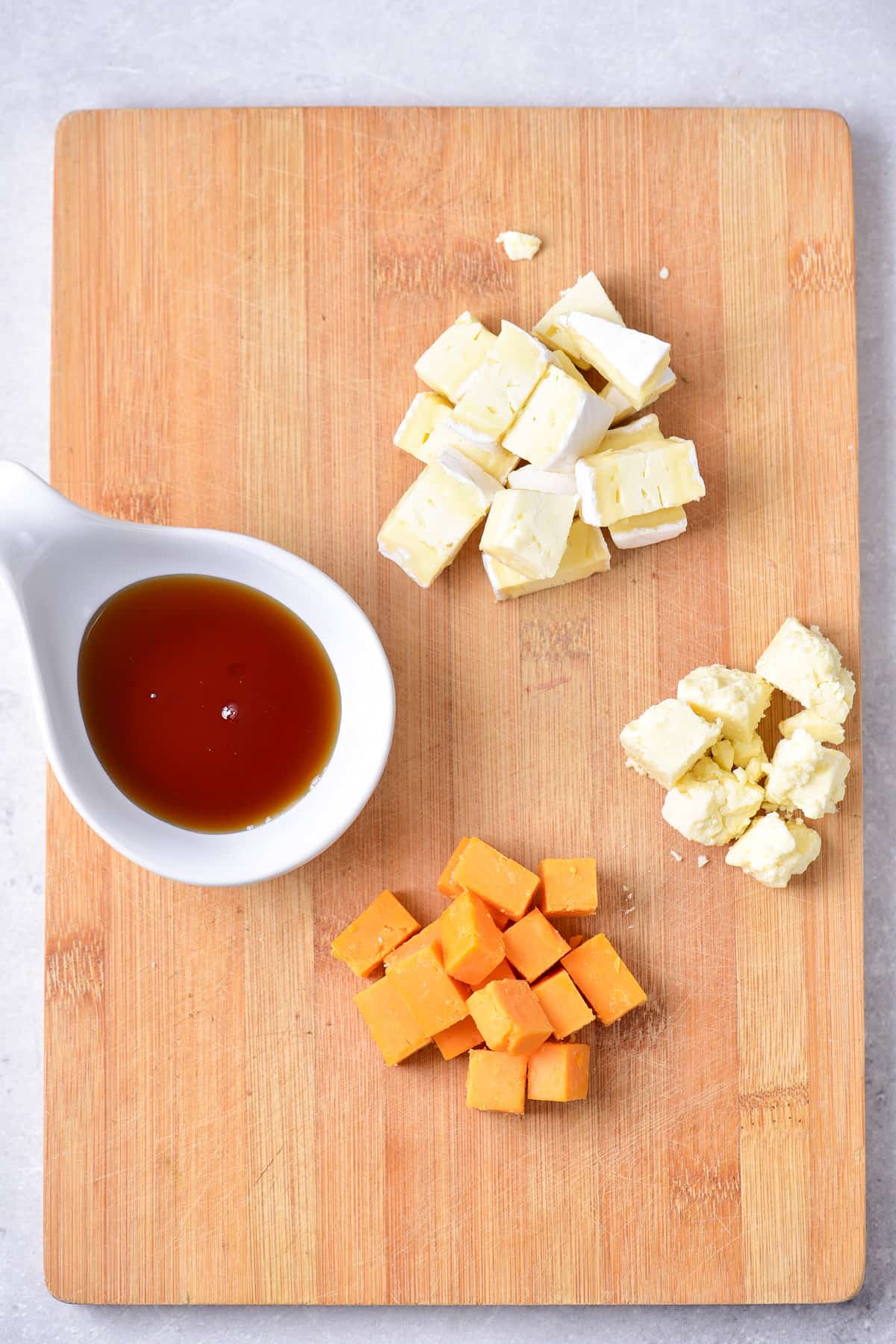
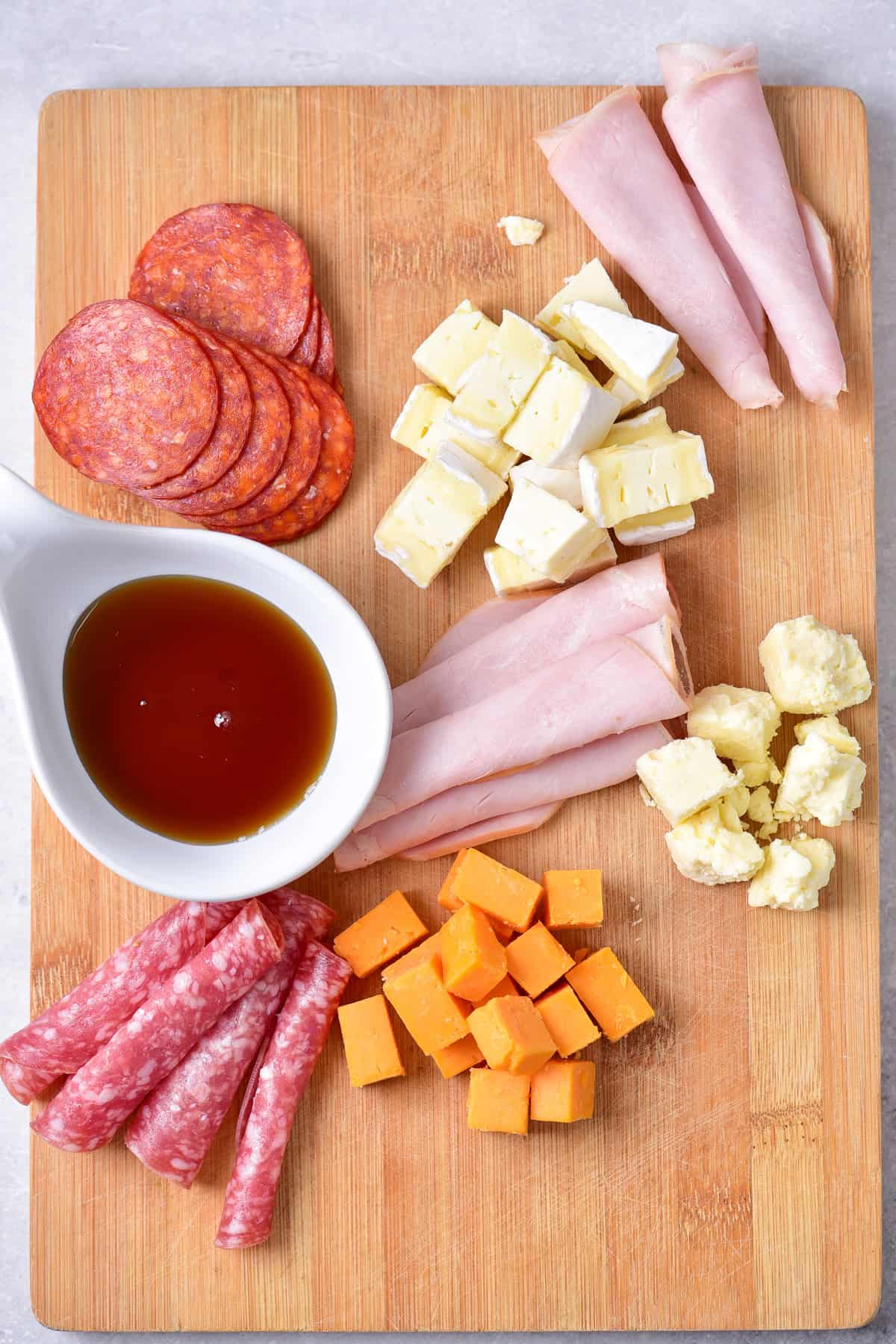
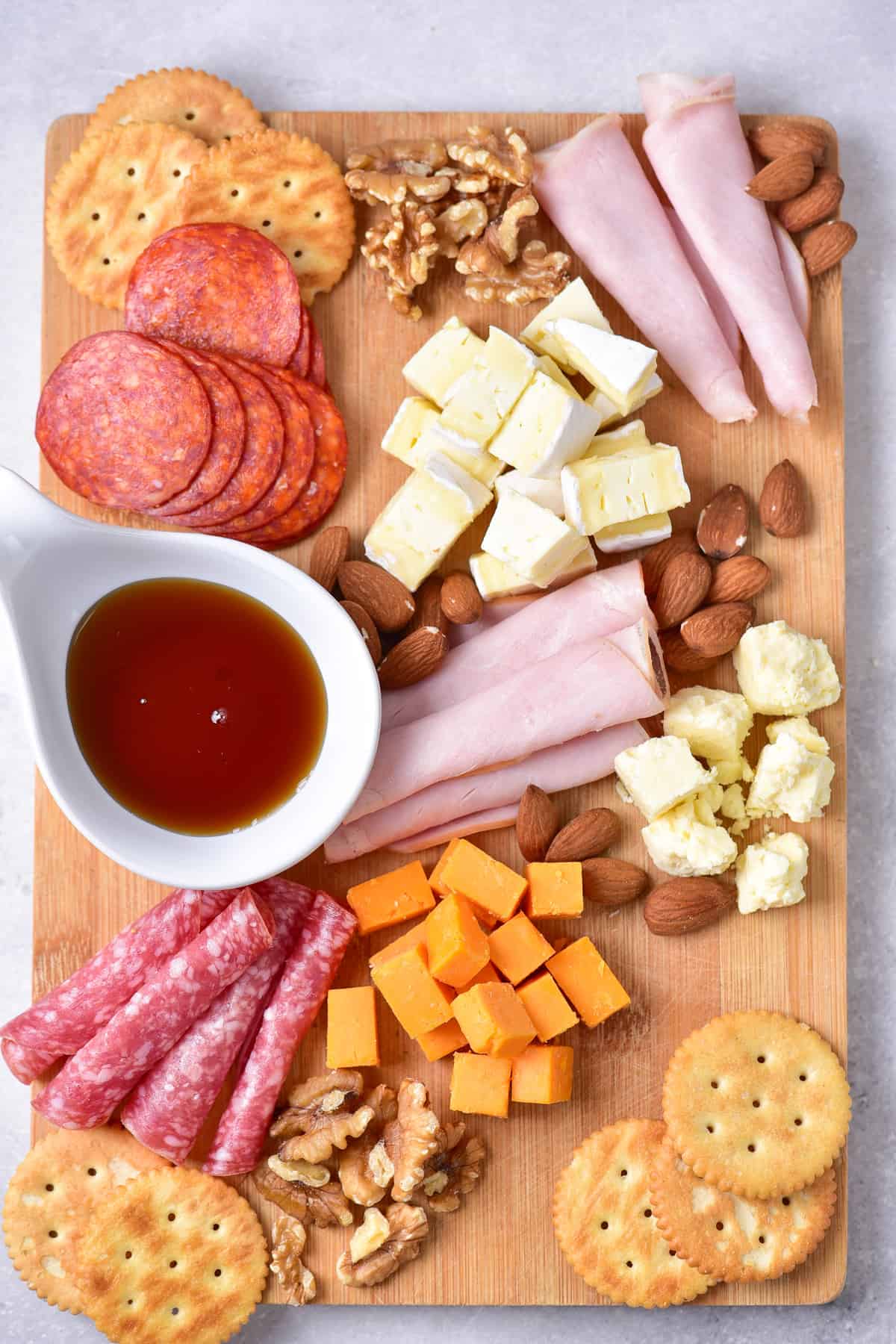

Serving and Presentation Tips
- Use different shapes and sizes of cheese and meat to add variety and texture to the board. You can also use different colors of fruits and vegetables to make it look more colorful and appealing.
- Use small bowls or ramekins to hold dips, spreads, or olives. This keeps them contained and also makes it easier for guests to dip or spread them on crackers or bread.
- Use a mix of crunchy and creamy textures to add contrast and interest to the board. For example, you can use crunchy crackers with creamy cheese or nuts with soft cheese.
- Use appropriate utensils for each type of cheese or meat. For example, use a cheese knife for soft cheese and a sharp knife for hard cheese. You can also provide toothpicks or small forks for guests to pick up the meat or cheese.
- Label meats and cheese with the name and origin to add visual interest and conversation points.
- If you're serving a charcuterie board for a holiday or special occasion, you can add festive touches like fresh herbs, flowers, or seasonal fruits. This makes it look more festive and also adds a pop of color to the board.
What is the 3333 rule for charcuterie boards?
The 3333 rule is a helpful way to remember what components to include when making your board. Simply stated, you should have 3 kinds of cheese, 3 kinds of meat, 3 kinds of bread or crackers, and 3 kinds of extras like nuts, fruits, or jams.
Can I make a charcuterie board ahead?
A charcuterie board is a great appetizer to make ahead of time. Once assembled, cover the board tightly with plastic wrap and store in the refrigerator for up to 24 hours ahead.
Store any sauces, chutneys, and crackers separately.
Let board stand at room temperature for 30 minutes or so before serving.
Or, you can prep the ingredients ahead of time and store them individually. Assemble the board before serving.
What to do with leftovers?
If you have leftover food items from your charcuterie board, keep food safety in mind when deciding if they can be stored and served again.
Boards left at room temperature for extended periods of time or that look very picked over may not be safe to store and serve again.
But if your food items are in good shape, try repurposing the food for soups, pasta dishes, sandwiches, and salads.
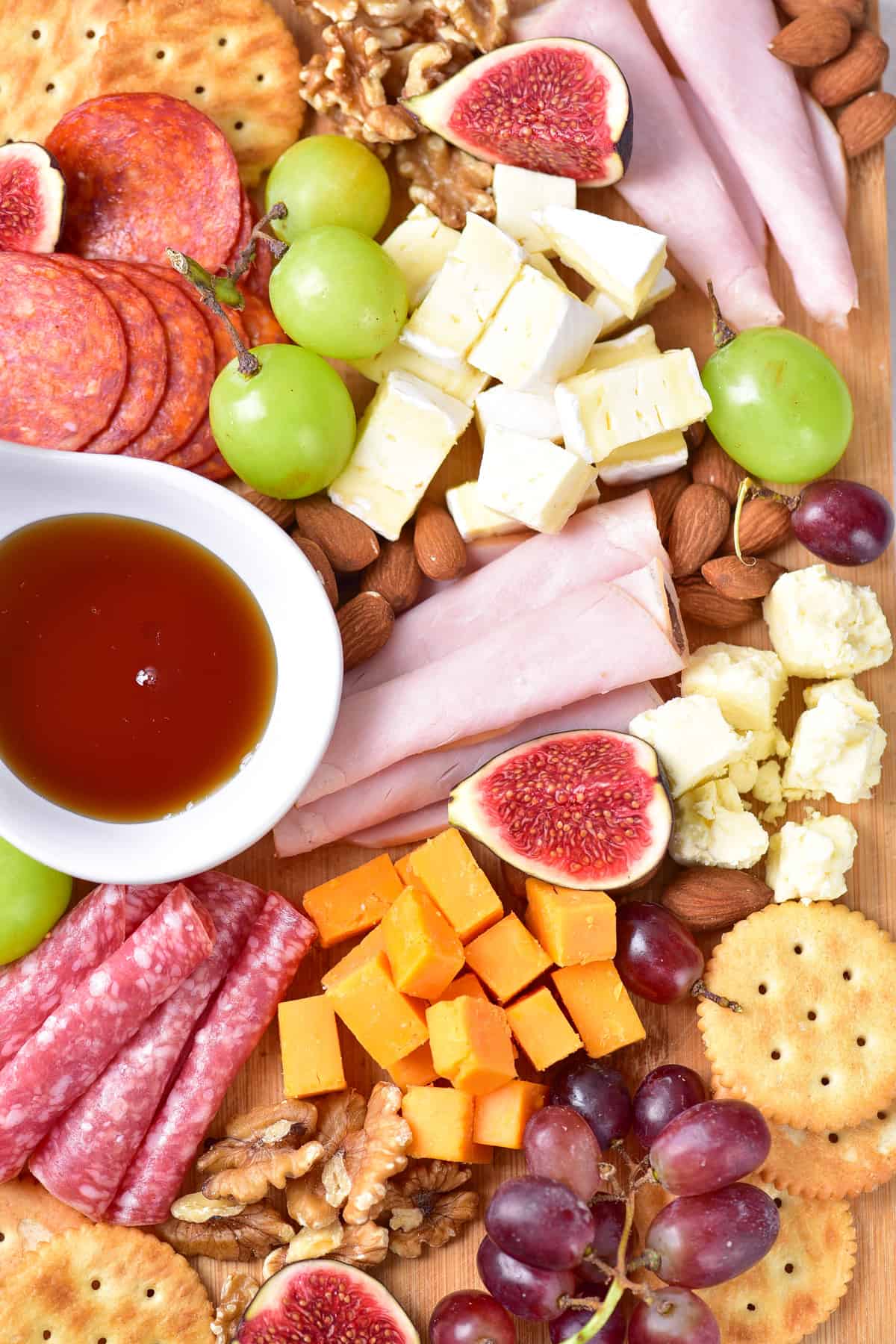
If you enjoyed this Charcuterie Board for Beginners recipe, I'd appreciate a 5 star rating and a share on Pinterest!
Email me the recipe!
Plus get all our new recipes too!
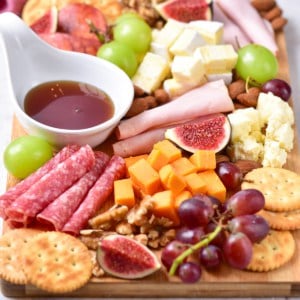
Charcuterie Board for Beginners
Ingredients
- 2 tablespoon honey maple syrup, chutney, jams, preserves
- 1 ounce cheddar cheese cubed
- 1 ounce brie cut into small wedges or cubed
- 1 ounce Asiago crumbled
- 5-6 slices of ham rolled up
- 10 slices salami rolled up
- 10 slices pepperoni
- 10-12 almonds whole
- 10-12 walnuts whole
- 10 Ritz crackers
- 20 green grapes
- 20 red grapes
- 2 figs quartered
Instructions
- Place a small bowl of honey in an off center position on your board.
- Place each of the three varieties of cheese on the board in separate piles. I like to imagine an askew triangle with each grouping of cheese as the "points" of the triangle.
- Roll up the ham and salami slices. Place them around the board, fanning them out slightly.
- Add several clusters of the almonds and walnuts in between the cheeses and meats.
- Add groupings of crackers in three of the four corners of the board.
- Fill in the remaining empty spaces with small bunches of grapes and quartered figs.


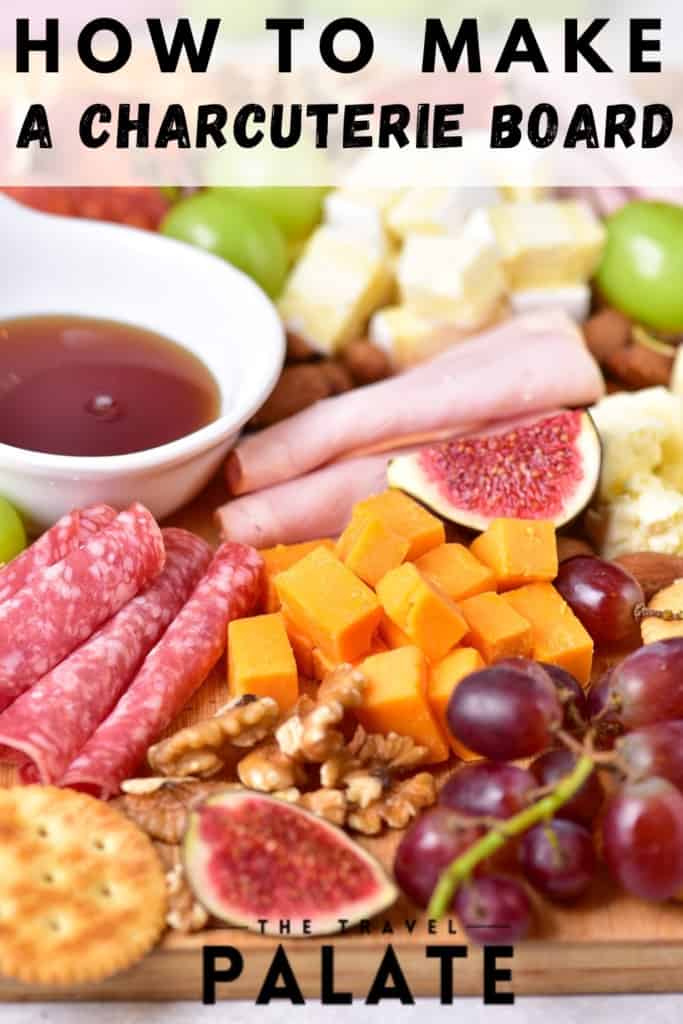
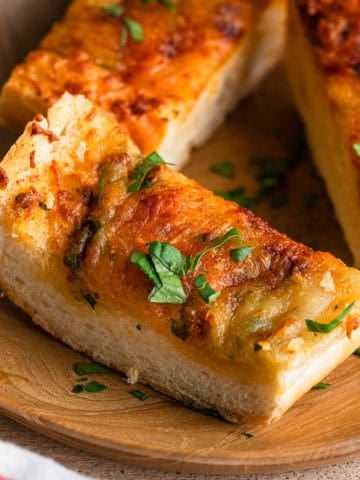
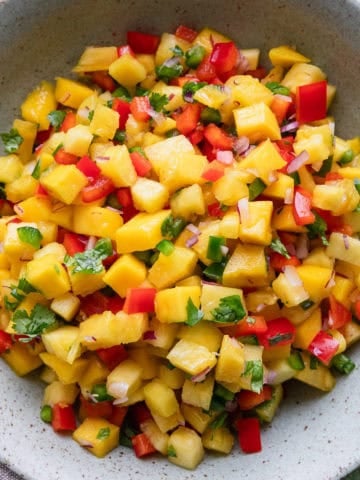
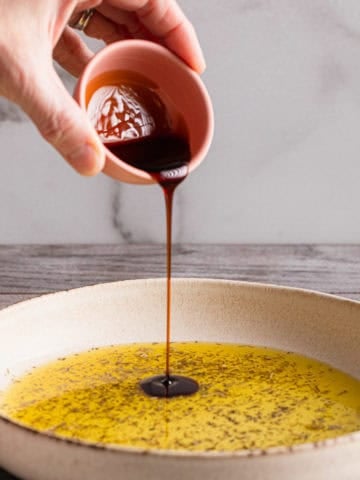
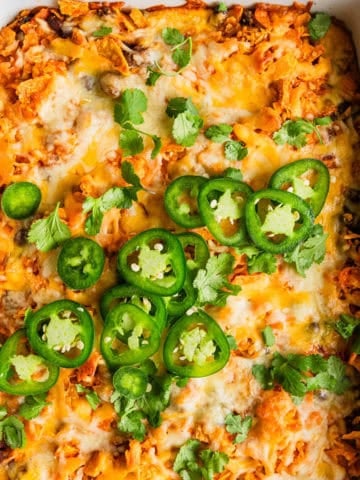
Comments
No Comments